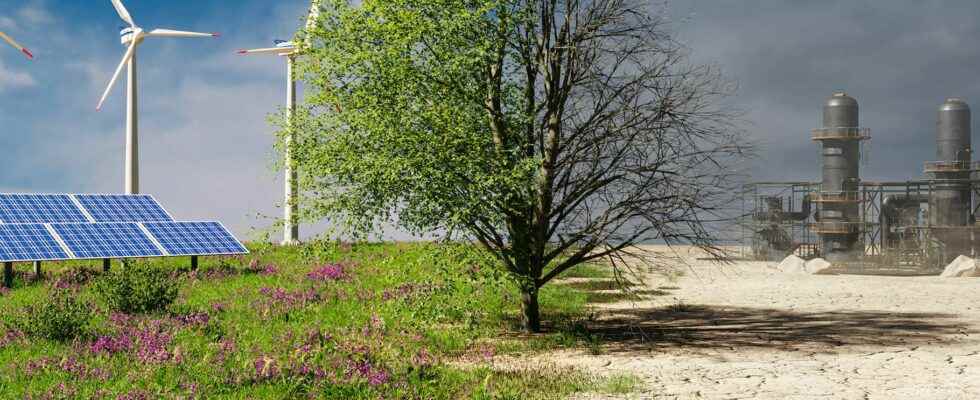Since the beginning of the industrial era, the Earth has warmed by 1.1°C. At issue: our greenhouse gas (GHG) emissions. Will we be able to limit the rise in temperature to 1.5°C? At 2°C? Researchers today call us to optimism. If the commitments made by the governments are respected, we will get there!
You will also be interested
[EN VIDÉO] Global warming: our planet in unknown territory In the preliminary version – which only covers the first nine months of 2021 – of its annual State of the Global Climate report, the World Meteorological Organization (WMO) confirms the trend of global warming. For the first time, the bar of a rise of 1°C compared to pre-industrial averages has been crossed over the period of the last twenty years. But the report above all highlights the many extreme weather phenomena that have occurred in 2021 and their consequences for the planet and for humanity. © World Meteorological Organization
Is it still possible to limit the global warming 1.5°C above pre-industrial averages? A certain number of pessimists will be tempted to answer no. Most scientists too. Except, as the last part of the 6and report of the Intergovernmental Panel on Climate Change (IPCC) published at the beginning of the month, to be agreed within the next three years, and for several decades thereafter, to drastic reductions in our emissions greenhouse gases (GHGs). Around 37% by 2030 compared to 2010 levels!
The current ambitions of governments in matter are not up to par. From researchers from the University of Melbourne (Australia) are now stressing, however, that in order to limit the global warming at 2°C — with a probability of at least 50% — we would only need to meet our footprint reduction targets carbon for 2030 set in 2015 by the Paris Climate Agreement and updated at the 26and Conference of signatory parties to the Climate Convention (COP26) held at the end of 2021 in Glasgow (Scotland). But also, those set for the slightly more distant deadline of the middle of this century.
To reach these conclusions, the researchers scrutinized the objectives of 196 countries, but also the available data on GHG emissions, particularly in the transport sector. Their work gives the emissions of the whole economy at the national level from data and climate promises and then aggregates them at the global level. They then use climate simulations probabilistic methods to infer future warming.
keep promises
This world promised only half a degree warmer more remains characterized by scientists as deeply disturbed, with storms more violent, higher sea levels, extinctions in the animal and plant kingdoms, the probable disappearance of corals, the melting ice and populations dying of heat or diseases related to air pollution. But Australian researchers have chosen to take a decidedly optimistic view. Thus, they only looked at the results to be expected if governments keep their promises. Without checking if they are really making the expected efforts. Not even that these efforts are credible.
The difference between 1.5°C, 2°C or 3-4°C average global warming can sound marginal. But, they represent vastly different scenarios for the future of humanity.
What can we do to protect ourselves from the worst climate impacts and begin to shape a healthier future? pic.twitter.com/3MhRtgJG2c— UN University – EHS (@UNUEHS) April 9, 2022
The Australian researchers point out that only a few years ago, no one believed it possible that targets sufficient to limit global warming to 2°C could be set. “A year ago, the promises of the countries put end to end did not allow us to stay below this symbolic bar”comments Malte Meinshausen, professor at the University of Melbourne, in a communicated. Yet, in this ideal world that researchers imagine today, the costs of energies solar and wind, for example, continue to decline. And some countries could even come to exceed their targets for reducing their greenhouse gas emissions.
“Even if we no longer have a margin of error, there is hope”, say the researchers. A hope that comes especially from developing countries. So, even though it has a deadline of 2070, India has finally set a goal of net zero emissions. ” The reduction in the use of fossil fuels in this decade should be the number one priority for the climate”concludes Malte Meinshausen.
Interested in what you just read?
